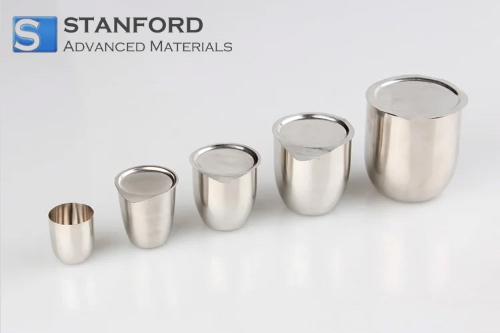Thermal Expansion Coefficient: Metals, Alloys, and Common Materials

Figure 1. Periodic Table [1]
Thermal Expansion Coefficient of Metals and Alloys
|
Metal |
Thermal Expansion |
|
Admiralty Brass |
11.2 |
|
3 |
|
|
13.1 |
|
|
Aluminum Bronze |
9.0 |
|
Antimony |
5 |
|
Barium |
11.4 |
|
6.7 |
|
|
Beryllium Copper |
9.3 |
|
7.2 |
|
|
Brass |
10.4 |
|
Bronze |
10 |
|
Calcium |
12.4 |
|
Cast Iron, grey |
5.8 |
|
Cast Steel, 3% C |
7.0 |
|
2.9 |
|
|
3.3 |
|
|
6.7 |
|
|
9.8 |
|
|
Copper-Base Alloy – Manganese Bronze |
11.8 |
|
Copper-Base Alloy – Nickel-Silver |
9.0 |
|
Cupronickel |
9.0 |
|
6.8 |
|
|
19.4 |
|
|
5 |
|
|
Germanium |
3.4 |
|
7.9 |
|
|
3.3 |
|
|
Hastelloy C |
5.3 |
|
6.4 |
|
|
8.0 |
|
|
18.3 |
|
|
Invar |
0.67 |
|
3.3 |
|
|
Iron, nodular pearlitic |
6.5 |
|
Iron, pure |
6.8 |
|
15.1 |
|
|
15.6 |
|
|
14 |
|
|
12 |
|
|
Manganese Bronze |
11.8 |
|
Mild steel |
5.9 |
|
3.0 |
|
|
Monel |
7.8 |
|
5.3 |
|
|
7.2 |
|
|
Nickel Wrought |
7.4 |
|
3.9 |
|
|
Red Brass |
10.4 |
|
Osmium |
2.8 |
|
5 |
|
|
Plutonium |
19.84 |
|
Potassium |
46 |
|
4.4 |
|
|
21 |
|
|
11 |
|
|
39 |
|
|
Stainless Steel |
9.4 |
|
3.6 |
|
|
Thorium |
6.7 |
|
5.7 |
|
|
12.8 |
|
|
4.8 |
|
|
2.5 |
|
|
Uranium |
7.4 |
|
4.4 |
|
|
14.6 |
|
|
19 |
|
|
3.2 |
Thermal Expansion Coefficient of Common Materials
|
Product |
Temperature Expansion |
|
ABS (Acrylonitrile butadiene styrene) thermoplastic |
72 - 108 |
|
ABS -glass fiber-reinforced |
31 |
|
Acetal - glass fiber-reinforced |
39 |
|
Acetals |
85 - 110 |
|
Acrylic |
68 - 75 |
|
Amber |
50 - 60 |
|
Arsenic |
4.7 |
|
Bakelite, bleached |
22 |
|
Barium ferrite |
10 |
|
Benzocyclobutene |
42 |
|
Brass |
18 - 19 |
|
Brick masonry |
5 |
|
Bronze |
17.5 - 18 |
|
Caoutchouc |
66 - 69 |
|
Cast Iron Gray |
10.8 |
|
Celluloid |
100 |
|
Cellulose acetate (CA) |
130 |
|
Cellulose acetate butynate (CAB) |
96 - 171 |
|
Cellulose nitrate (CN) |
80 - 120 |
|
Chlorinated polyvinylchloride (CPVC) |
63 - 66 |
|
Chromium |
6 - 7 |
|
Clay tile structure |
5.9 |
|
Concrete |
13 - 14 |
|
Concrete structure |
9.8 |
|
Ebonite |
70 |
|
Epoxy - glass fiber reinforced |
36 |
|
Epoxy, cast resins & compounds, unfilled |
45 - 65 |
|
Ethylene ethyl acrylate (EEA) |
205 |
|
Ethylene vinyl acetate (EVA) |
180 |
|
Fluoroethylene propylene (FEP) |
135 |
|
Fluorspar, CaF2 |
19.5 |
|
Glass, hard |
5.9 |
|
Glass, plate |
9.0 |
|
Glass, Pyrex |
4.0 |
|
Granite |
7.9 - 8.4 |
|
Graphite, pure (Carbon) |
4 -8 |
|
Gunmetal |
18 |
|
Ice, 0oC water |
51 |
|
Inconel |
11.5 - 12.6 |
|
Limestone |
8 |
|
Macor |
9.3 |
|
Marble |
5.5 - 14.1 |
|
Masonry, brick |
4.7 - 9.0 |
|
Mica |
3 |
|
Monel metal |
13.5 |
|
Mortar |
7.3 - 13.5 |
|
Nylon, general purpose |
50 - 90 |
|
Nylon, glass fiber reinforced |
23 |
|
Phosphor bronze |
16.7 |
|
Plaster |
17 |
|
Plastics |
40 - 120 |
|
Polycarbonate - glass fiber-reinforced |
21.5 |
|
Polyester |
124 |
|
Polyester - glass fiber-reinforced |
25 |
|
Polyethylene (PE) |
108 - 200 |
|
Polyethylene (PE) - High Molecular Weight |
108 |
|
Polyethylene terephthalate (PET) |
59.4 |
|
Polypropylene (PP), unfilled |
72 - 90 |
|
Polypropylene - glass fiber-reinforced |
32 |
|
Polytetrafluorethylene (PTFE) |
112 - 135 |
|
Polyvinyl chloride (PVC) |
54 - 110 |
|
Porcelain, Industrial |
4 |
|
Quartz, fused |
0.55 |
|
Quartz, mineral |
8 - 14 |
|
Sandstone |
11.6 |
|
Sapphire |
5.3 |
|
Wax |
2 - 15 |
|
Wedgwood ware |
8.9 |
|
Wood, across (perpendicular) to grain |
30 |
|
Wood, fir |
3.7 |
|
Wood, parallel to grain |
3 |
|
Wood, pine |
5 |
Note: Most coefficients are recorded at 25 degrees Celsius (77 degrees Fahrenheit).
Thermal Expansion Coefficient: FAQs
1. What Is the Thermal Expansion Coefficient?
The thermal expansion coefficient refers to the rate at which a material expands or contracts when subjected to temperature changes. It quantifies the change in size of a material in response to alterations in temperature.
2. How Is the Thermal Expansion Coefficient Measured?
Thermal expansion coefficients are commonly determined through methods like dilatometry or interferometry, where the material is exposed to controlled temperature shifts, allowing for measurement of the subsequent dimensional alterations.
3. Why Is the Thermal Expansion Coefficient Important?
Understanding thermal expansion coefficients is crucial in various industries, especially in construction, engineering, and materials science. It helps predict how materials will respond to temperature variations, preventing structural damage or failure in applications exposed to temperature fluctuations.
4. Do All Materials Expand or Contract at the Same Rate?
No, different materials exhibit varying thermal expansion coefficients. For instance, metals generally have higher coefficients compared to ceramics or polymers. An understanding of these differences is vital in material selection for specific applications.
5. How Does Thermal Expansion Affect Structures?
Thermal expansion can cause dimensional changes in structures, leading to stress, warping, or cracking when materials expand or contract unevenly due to temperature variations. This phenomenon must be considered in architectural and engineering designs.
6. Can Thermal Expansion Coefficients Be Controlled?
While it's challenging to alter a material's inherent thermal expansion characteristics, engineers and designers can mitigate its effects through design considerations, material selection, and using composite materials with tailored properties.
7. Is Thermal Expansion Always Undesirable?
While thermal expansion can pose challenges in some applications, in others, it can be beneficial. For example, bimetallic strips exploit different thermal expansion rates to act as thermometers or switches.
Reference:
[1] National Center for Biotechnology Information (2024). Periodic Table of Elements. Retrieved January 8, 2024 from https://pubchem.ncbi.nlm.nih.gov/periodic-table/.



